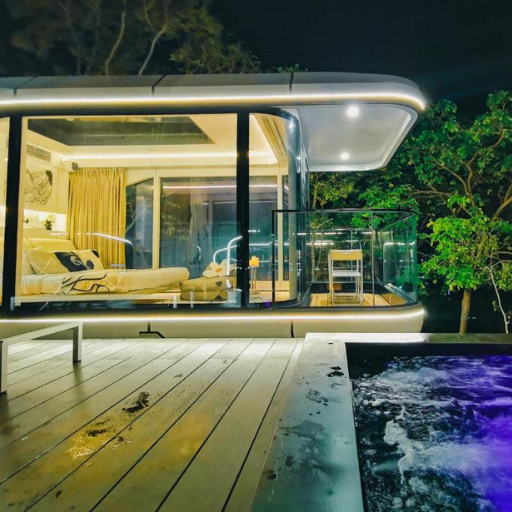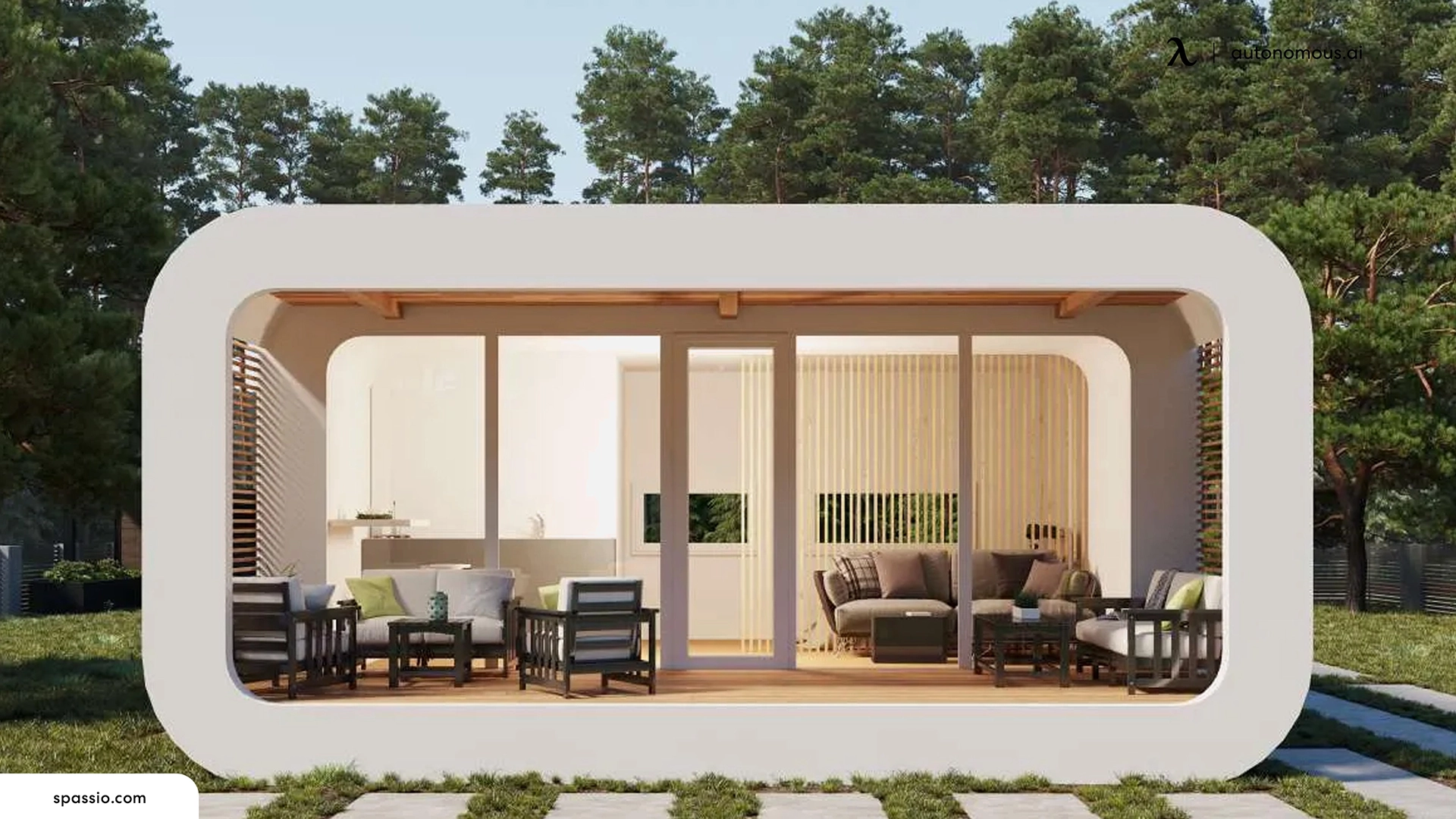Why Modular Residences Are the Future of Lasting Living
Modular homes are progressively recognized as a crucial solution for sustainable living, supplying a blend of performance, cost-effectiveness, and ecological advantages. Their building in controlled atmospheres substantially reduces waste and enhances accuracy, while the potential for including innovative energy-efficient systems positions them as a forward-thinking choice in housing. The adaptability of modular designs enables for the assimilation of sustainable innovations and materials tailored to specific needs. As we browse the difficulties of urbanization and environmental sustainability, one need to take into consideration how these homes might redefine our approach to living areas.
Environmental Benefits of Modular Houses
The environmental benefits of modular homes represent a significant step toward lasting living. These homes are constructed in controlled factory settings, which dramatically minimizes waste produced throughout the structure process. By enhancing materials and lessening excess, modular building and construction adds to a more effective usage of resources contrasted to typical building methods.
Additionally, modular homes are frequently developed with energy effectiveness in mind. Numerous integrate sophisticated insulation techniques, energy-efficient windows, and sustainable materials, adding to reduced energy consumption. This can result in reduced greenhouse gas discharges over the life-span of the home, enhancing its overall ecological account.
The capability to transportation and assemble modular parts on-site additionally minimizes the carbon impact connected with building logistics. Additionally, many modular homes are constructed to be quickly upgradeable and adaptable, enabling homeowners to execute lasting innovations, such as solar panels and energy-efficient heating unit, over time.
Inevitably, the environmental advantages of modular homes not only advertise lasting living yet also motivate an even more liable technique to real estate development, aligning with worldwide initiatives to battle environment modification and preserve natural deposits for future generations.
Cost-Effectiveness and Price
Structure a home frequently represents among the biggest financial investments people make in their life time, and modular homes offer a compelling option for those looking for cost-effectiveness and affordability. One of the main benefits of modular homes is their lower building costs compared to standard site-built homes. The structured production process enables considerable financial savings on labor and materials, which translates to decrease rates for customers.
In addition, modular homes generally have shorter building and construction timelines. This not just reduces expenses associated with funding and insurance but also mitigates the dangers associated with inflation and fluctuating market problems. Numerous customers find that modular homes can be customized to fit their budgets without sacrificing quality or style.
Additionally, energy efficiency is typically developed right into the style of modular homes, leading to decreased utility costs in time. Many manufacturers focus on lasting materials and techniques, additionally improving the long-term economic viability of these homes. On the whole, the mix of initial expense savings, fast building, and ongoing power effectiveness makes modular homes an eye-catching alternative for those seeking to buy lasting living without damaging the financial institution.
Performance in Building
Modular homes not just use financial benefits however also succeed in building efficiency. The modular building process entails the simultaneous building and construction of modules in a factory setup while site prep work occurs concurrently. This parallel technique significantly lowers the overall timeline from conception to conclusion, typically reducing building time by up to half compared to typical techniques.
In addition, factory-controlled environments improve quality control. By using accuracy manufacturing strategies, modular homes are built to helpful resources precise specifications, decreasing waste and mistakes. This uniformity not only leads to a greater high quality product however also adds to lasting practices by decreasing product waste throughout building.
Furthermore, the usage of modern-day technology and automation in the manufacturing procedure enables quicker setting up and reduced labor costs. When the components are delivered to the website, they can be efficiently put together, even more quickening the timeline. This streamlined process is not only helpful for builders yet likewise lessens disturbances to the surrounding setting throughout construction.
Modification and Layout Flexibility
An impressive array of customization choices differentiates modular homes, enabling house owners to tailor their space to satisfy details demands and choices. This style adaptability is a trademark of modular construction, allowing customers to select everything from floor strategies and area layouts to fixtures and coatings. Unlike typical homes, modular layouts facilitate a joint technique where designers and builders function closely with homeowners, making certain that each element straightens with private lifestyles and visual wishes.
Furthermore, modular homes can be conveniently reconfigured or broadened, accommodating changing family members dynamics or evolving personal tastes. This versatility not just improves the home's capability however likewise from this source contributes to lasting sustainability, as property owners can modify their areas as opposed to seek brand-new housing remedies.

Future Trends in Lasting Real Estate
Arising trends in lasting housing are improving the landscape of domestic building and construction, highlighting innovative modern technologies and eco-friendly methods. One considerable trend is the integration of wise home technology, which improves power efficiency through automated systems that maximize and keep track of power consumption. This not just minimizes utility costs however additionally adds to a reduced carbon impact.
In addition, the use of sustainable products is coming to be increasingly usual. Building contractors are selecting recycled, locally sourced, or quickly eco-friendly materials, which minimize environmental effect and support regional economic situations. Moreover, modular homes are acquiring appeal for their reduced waste during construction and their adaptability to various surfaces and environments.
One more pattern is the incorporation of environment-friendly roof coverings and living wall surfaces, which boost air top quality and supply all-natural insulation. These functions additionally advertise biodiversity in city locations.
Final Thought
In final thought, modular homes emerge as a crucial service for lasting living, offering significant ecological benefits via decreased waste and power performance. As fads in sustainable real estate progress, modular homes read what he said are positioned to play a vital role in advertising green living methods for future generations.
Structure a home typically stands for one of the largest economic investments individuals make in their life time, and modular homes use an engaging service for those looking for cost-effectiveness and affordability. One of the main benefits of modular homes is their reduced construction expenses contrasted to conventional site-built homes. On the whole, the mix of initial price savings, fast building and construction, and ongoing energy performance makes modular homes an attractive choice for those looking to spend in lasting living without breaking the financial institution.
Eventually, the customization and style adaptability supplied by modular homes guarantee that they are not just frameworks, however individualized refuges that reflect the distinct identities of their owners while promoting lasting living practices.
